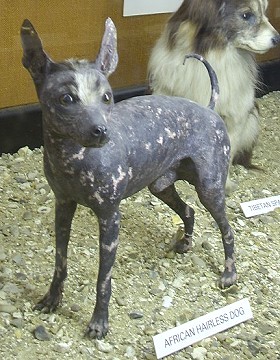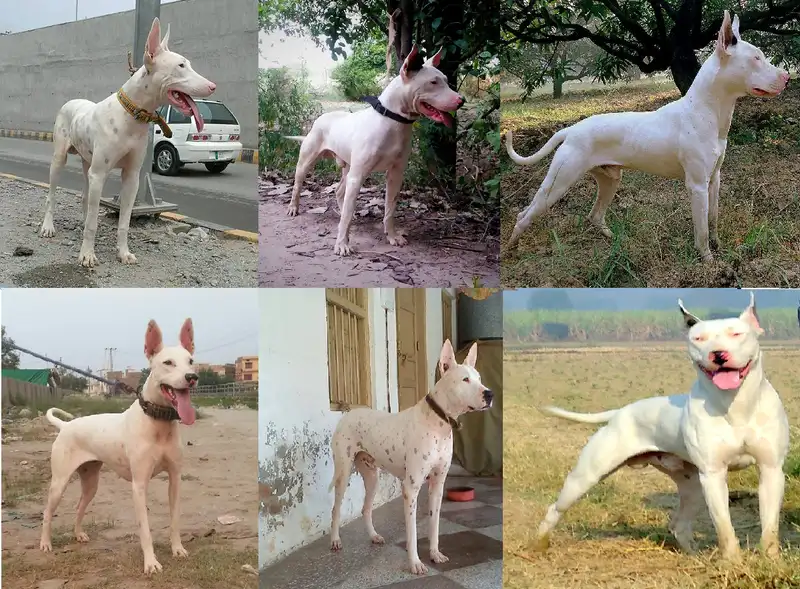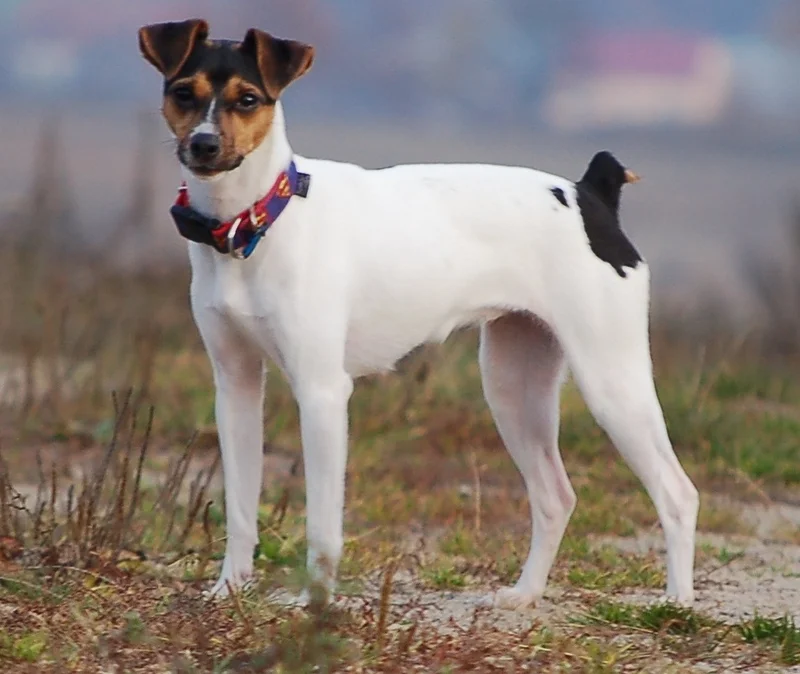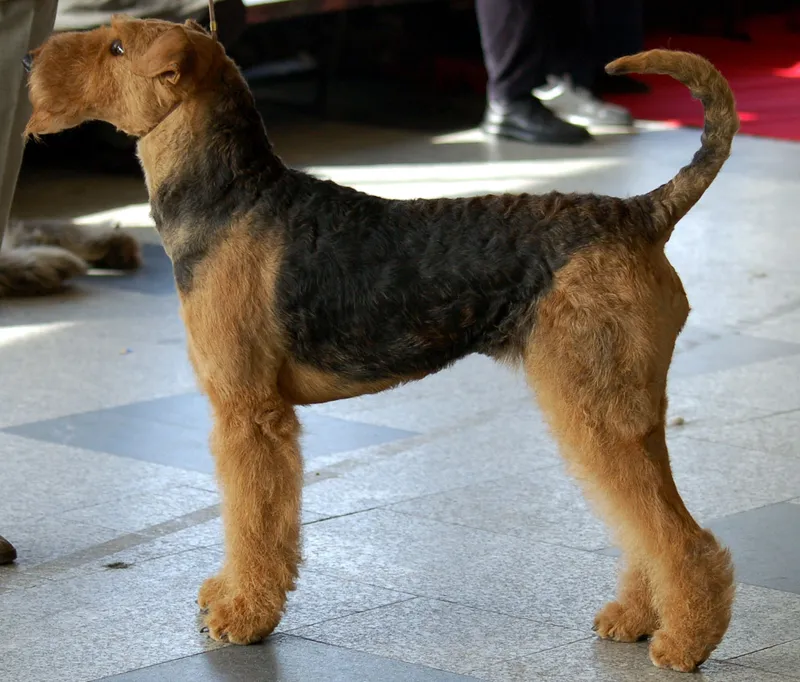American Staffordshire Terrier
The American Staffordshire Terrier, or Amstaff, is a medium-sized, muscular breed known for its loyalty, intelligence, and affectionate nature. Originally bred for bull-baiting, they are now cherished family companions, excelling in various activities and known for their playful demeanor.
Overview
🐕Breed Overview
✨Key Traits
💡What Makes American Staffordshire Terrier Special
The American Staffordshire Terrier is characterized by its muscular build and strong jaws, giving it an imposing appearance. However, beneath this tough exterior lies a gentle and affectionate nature. They are known for their loyalty and protective instincts, making them excellent family pets.
Amstaffs are highly intelligent and eager to learn, excelling in obedience and agility training. Their playful spirit and high energy levels require regular exercise and mental stimulation to keep them happy. Despite their history as fighting dogs, proper socialization and training can help them develop into well-rounded companions.
Their adaptability allows them to thrive in various living situations, provided their exercise and social needs are met. Overall, the Amstaff is a versatile breed that can excel in many roles, from family companion to working dog.
The American Staffordshire Terrier, affectionately known as the Amstaff, is a medium-sized dog breed that boasts a muscular build and a short, glossy coat. With a history rooted in England, this breed was originally developed for bull-baiting and dog fighting, but today, it is celebrated for its loyalty, intelligence, and affectionate nature. Amstaffs are known for their playful demeanor and strong bond with their families, making them excellent companions for active households.
They thrive on human interaction and require consistent training and socialization to ensure they develop into well-rounded pets. ' Their versatility allows them to excel in various activities, including obedience, agility, and even therapy work. However, potential owners should be aware of their strong prey drive and tendency towards aggression with other dogs, which can be managed through proper training and socialization.
With a lifespan of 12 to 14 years, the American Staffordshire Terrier can be a loyal and loving addition to any family, provided they receive the exercise, training, and attention they need to thrive.
🎉Fun Facts
Amstaffs excel in various dog sports, including agility, obedience, and therapy work.
Despite their tough appearance, Amstaffs are known for their gentle nature, especially with children.
The American Staffordshire Terrier is often referred to as the 'Amstaff.'
The breed has been featured in various films and media, including the famous Petey from 'Our Gang.'
They are known for their strong jaws and powerful build, making them excellent working dogs.
Breed Characteristics
Family & Friends
Good Behavior
Get Up & Go
Household Harmony
Temperament & Personality
✨Key Traits
🐕Core Temperament
The American Staffordshire Terrier is known for its friendly and outgoing temperament. They are typically affectionate with their families and can be very playful, especially with children. While they are protective of their loved ones, they are generally not aggressive towards people.
However, they can exhibit aggression towards other dogs if not properly socialized. Their intelligence and eagerness to please make them relatively easy to train, but they require consistent guidance to prevent stubborn behaviors. Amstaffs thrive on human companionship and can become anxious if left alone for long periods.
Overall, their temperament is characterized by loyalty, playfulness, and a strong desire to be part of the family.
💫Personality Profile
The American Staffordshire Terrier is known for its friendly and affectionate nature. They are highly loyal to their families and thrive on human interaction. Amstaffs are playful and energetic, often displaying a clownish demeanor that endears them to their owners.
While they can be protective of their family, they are generally good with children and can be socialized to get along with other pets. However, they may show aggression towards unfamiliar dogs, especially if not properly socialized. Their intelligence and eagerness to please make them relatively easy to train, but they require consistent and firm guidance to curb any stubborn tendencies.
Overall, the Amstaff is a loving and devoted companion that enjoys being part of family activities.
🔊Vocal Tendencies
The American Staffordshire Terrier is generally a quiet breed, with a moderate tendency to bark. They may bark to alert their owners of strangers or unusual sounds, but they are not known for excessive barking.
Their vocalizations can include growls or playful barks during playtime. While they are not typically yappy dogs, they may express their excitement or alertness through barking, especially if they sense something unusual in their environment.
Overall, their noise level is manageable, making them suitable for various living situations.
Affection & Social Traits
Energy & Activity
Communication Style
Care Requirements
🏃♂️Exercise Requirements
Daily Exercise
The American Staffordshire Terrier (Amstaff) requires a moderate amount of exercise to maintain its physical and mental well-being. Ideally, they should engage in at least 60 minutes of exercise daily, which can be broken down into multiple sessions. Activities such as brisk walks, runs, or vigorous play sessions in a secure yard are excellent for this breed.
They also enjoy interactive games like fetch or tug-of-war, which not only provide physical stimulation but also strengthen the bond with their owners. Puppies should have shorter, more frequent exercise sessions to avoid overexertion, while senior dogs may require gentler activities to accommodate their changing energy levels. Regular exercise is crucial for preventing behavioral issues such as boredom-induced destructiveness, as well as maintaining a healthy weight and cardiovascular health.
Insufficient exercise can lead to increased anxiety, aggression, and other health problems, making it essential for owners to prioritize their Amstaff's activity needs.
Preferred Activities
🏠Living & Adaptability
Space Requirements
American Staffordshire Terriers adapt well to various living environments, but they thrive in homes with ample outdoor space for exercise. While they can live in apartments, it is crucial to provide them with daily walks and playtime to meet their exercise needs.
A secure yard is ideal, as it allows them to run and play freely. Owners in smaller living spaces should ensure they have a structured routine for outdoor activities to prevent boredom and destructive behaviors.
The breed's medium size and moderate energy level make them suitable for both urban and suburban settings, provided their exercise and socialization needs are met.
Climate Preference
🍲Feeding Guide
Schedule
Food Types
Portion Size
Special Nutritional Needs
American Staffordshire Terriers may benefit from a diet rich in protein to support their muscular build. It's essential to choose high-quality dog food that meets their specific life stage needs.
Some Amstaffs may be prone to food allergies, so monitoring for any adverse reactions to new foods is crucial. Regular veterinary check-ups can help determine if any dietary adjustments are necessary.
✨Grooming Requirements
Grooming Overview
The American Staffordshire Terrier has a short, smooth coat that requires minimal grooming. Regular brushing with a soft-bristle brush will help remove loose hair and keep the coat healthy.
Bathing should be done as needed, typically every few months, or when the dog gets particularly dirty. It's essential to check their ears regularly for wax buildup and clean them as necessary.
Nail trimming should be done every few weeks to prevent overgrowth and discomfort. Overall, grooming is straightforward and does not require specialized tools or techniques.
Care Schedule
Brush weekly; bathe as needed (every 1-3 months); trim nails every 2-4 weeks.
Health Profile
⚕️Health Care
Regular health care is vital for the American Staffordshire Terrier's lifespan. Routine veterinary check-ups, vaccinations, and preventive treatments can help detect health issues early and ensure the dog remains healthy throughout its life.
Owners should also be proactive in managing their dog's weight, dental health, and overall wellness. By maintaining a consistent health care routine, owners can significantly impact their Amstaff's quality of life and longevity.
Health Issues Overview
⏳Average Lifespan
Genetic Factors
Genetics play a crucial role in the lifespan of the American Staffordshire Terrier. Certain hereditary health issues, such as hip dysplasia and heart disease, can affect their longevity.
Responsible breeding practices that prioritize genetic health can help reduce the risk of these conditions. Potential owners should seek reputable breeders who conduct health screenings and genetic testing to ensure they are getting a healthy puppy.
Understanding the genetic background of the breed can help owners make informed decisions about their dog's health and care.
Living Conditions
The American Staffordshire Terrier's lifespan can be influenced by various environmental factors. A stable and loving home environment, regular exercise, and mental stimulation contribute positively to their longevity.
Exposure to harsh weather conditions can affect their health, so it's essential to provide adequate shelter and care during extreme temperatures. Additionally, social interactions with humans and other pets can enhance their emotional well-being, leading to a healthier and longer life.
Owners should ensure that their Amstaffs have a safe and secure space to play and explore, as this can significantly impact their overall happiness and lifespan.
🏥Common Health Issues
Hip Dysplasia
Warning Signs
🔬Diagnosis
X-rays and physical examination by a veterinarian.
💊Treatment
Medications, weight management, and in severe cases, surgery.
📝Management Tips
Maintain a healthy weight, provide joint supplements, and engage in low-impact exercise.
Allergies
Warning Signs
🔬Diagnosis
Allergy testing and elimination diet.
💊Treatment
Antihistamines, corticosteroids, or allergy shots.
📝Management Tips
Identify and avoid allergens, use hypoallergenic products, and consult a vet for treatments.
Cerebellar Ataxia
Warning Signs
🔬Diagnosis
Neurological examination and genetic testing.
💊Treatment
Supportive care and management of symptoms.
📝Management Tips
Provide a safe environment and monitor for mobility issues.
Hypothyroidism
Warning Signs
🔬Diagnosis
Blood tests to measure thyroid hormone levels.
💊Treatment
Thyroid hormone replacement therapy.
📝Management Tips
Regular vet check-ups and weight management.
🛡️Preventive Care
🔬Hip Evaluation
Hip Evaluation: Assesses the hip joints for dysplasia and other abnormalities.
📅 Annually after 2 years of age.
🔬Thyroid Testing
Thyroid Testing: Measures thyroid hormone levels to detect hypothyroidism.
📅 Every 1-2 years after 5 years of age.
🔬Cardiac Evaluation
Cardiac Evaluation: Checks for congenital heart disease and other heart conditions.
📅 Every 1-2 years after 5 years of age.
🔬Eye Examination
Eye Examination: Screens for hereditary eye conditions.
📅 Every 1-2 years, especially in older dogs.
🔬DNA Testing for Cerebellar Ataxia
DNA Testing for Cerebellar Ataxia: Identifies genetic predisposition to this neurological condition.
📅 Once, preferably before breeding or at a young age.
Training
🧠Intelligence & Trainability
💪Work Drive
American Staffordshire Terriers have a strong work drive and thrive when given tasks to complete. They excel in various dog sports, including agility, obedience, and tracking, which provide both physical and mental stimulation.
Engaging them in activities that challenge their intelligence, such as puzzle toys or scent work, can help keep them mentally sharp. Without sufficient mental and physical engagement, they may become bored and exhibit destructive behaviors, making it essential for owners to provide regular opportunities for work and play.
⚠️Training Considerations
American Staffordshire Terriers can exhibit behavioral challenges, particularly aggression towards other dogs if not properly socialized from a young age. This breed's strong prey drive may lead to chasing smaller animals, necessitating careful supervision during outdoor activities.
Stubbornness can also be a challenge during training, requiring consistent and patient handling. To overcome these challenges, early socialization with various people, dogs, and environments is crucial.
Positive reinforcement training methods work best, as Amstaffs respond well to praise and rewards. Engaging them in obedience classes or group training can also help mitigate aggressive tendencies and improve their social skills.
📝Training Tips
Training an American Staffordshire Terrier requires patience, consistency, and positive reinforcement. Start training early, focusing on basic commands such as sit, stay, and come.
Incorporate fun and engaging activities to keep their interest, as they thrive on mental stimulation. Socialization is key; expose them to different environments, people, and other dogs to help them develop into well-rounded adults.
Use high-value treats and praise to reward good behavior, and avoid harsh corrections, as they can lead to fear or aggression. Regular training sessions will reinforce their learning and strengthen the bond between owner and dog.
History & Heritage
📜Origin Story
The American Staffordshire Terrier originated from the bull-and-terrier crosses that were developed in England during the 19th century. These dogs were bred for their strength and agility, initially used in bull-baiting and later in dog fighting.
As the popularity of these sports declined, the breed found its way to America, where it was embraced by immigrants who valued its versatility as a working dog and companion. In the United States, these dogs were bred to be larger and more powerful than their English counterparts, leading to the establishment of the American Staffordshire Terrier as a distinct breed.
The breed gained recognition from the American Kennel Club in 1936, reflecting its growing popularity as a family pet and working dog.
⏳Development History
The American Staffordshire Terrier's development can be traced back to the early 19th century in England, where it was bred from bulldogs and various terrier breeds. The initial purpose of these dogs was for bull-baiting and later dog fighting.
As the sport of dog fighting gained popularity, these dogs were bred for their strength, agility, and tenacity. In the late 1800s, immigrants brought these dogs to America, where they were further developed into a larger and more powerful breed.
The American Kennel Club recognized the breed in 1936 as the Staffordshire Terrier, later changing the name to American Staffordshire Terrier in 1972 to distinguish it from the Staffordshire Bull Terrier. Over the years, the breed has evolved from its fighting origins to become a beloved family companion, known for its loyalty and affectionate nature.
🛡️Purpose & Historical Role
Originally bred for bull-baiting and dog fighting, the American Staffordshire Terrier has transitioned into a loyal companion and family pet. Its strength and agility made it a valuable working dog on farms, where it helped control vermin and protect livestock. Today, the breed excels in various activities, including obedience, agility, and therapy work, showcasing its intelligence and versatility.
🏺Cultural Significance
The American Staffordshire Terrier has played a significant role in American culture, often depicted in films and media as loyal companions and family pets. One of the most famous Amstaffs is Petey from the 'Our Gang' comedies, which helped to shape the breed's image as a loving and gentle family dog. Despite their historical association with dog fighting, many Amstaffs are known for their affectionate nature, particularly towards children, earning them the nickname 'nanny dogs.' This cultural significance has contributed to a growing appreciation for the breed as a devoted family member and companion, rather than a fighting dog.
Conservation Status
This breed is less common but has stable populations in certain regions.









